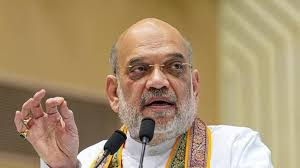GST reforms: Home Minister Amit Shah set to open talks for consensus on rate rationalisation

Union Home Minister Amit Shah has taken charge of reviving talks on GST rate reform. The government plans to simplify the tax system by removing the 12% slab, aiming to make GST easier to understand and implement. Shah will hold discussions with central ministries and state governments to build support before the next GST Council meeting.
Why Reform Is Back on the Table
India introduced the Goods and Services Tax in 2017 to create a unified indirect tax system. But over time, multiple rate slabs—5%, 12%, 18%, and 28%—have made the system complex. Businesses often struggle with classification disputes and compliance issues.
Several efforts in the past, including those in 2021 and 2024, failed to deliver a clear outcome. The 12% slab remained untouched due to lack of consensus. Shah’s direct involvement now signals a political push to finally resolve the issue.
What’s the Proposal?
The core idea is to eliminate the 12% slab. Items currently taxed at 12% would move to either the 5% or 18% bracket.
For example:
- Essential goods and services may shift to 5%
- Higher-value products could move to 18%
This change would reduce the number of slabs, making GST simpler. However, it may come at a cost. The Centre and states together could lose ₹70,000–₹80,000 crore in revenue every year.
Who’s Involved in the Talks
Shah is speaking with senior Finance Ministry officials and is expected to consult state finance ministers soon.
Key stakeholders include:
- State governments, both BJP and Opposition-ruled
- Central ministries, like Finance, Commerce, and Health
- Industries, such as consumer goods and insurance
Each group has its own concerns. Shah aims to create a unified approach that works for all.
Issues That Could Delay Consensus
Several items under the 12% slab are already sparking debate.
- Insurance premiums for health and life currently attract 18% GST. Many want this reduced to 5% or even made tax-free.
- Processed food items, currently taxed at 12%, may get shifted. That could impact prices and margins.
- Textiles and footwear had earlier faced duty inversion issues. Reworking their tax rates could reopen old disputes.
Each of these areas affects large voter groups and industries. So, any change needs careful negotiation.
Why Amit Shah?
Usually, GST reform falls under the Finance Ministry. But Shah’s entry reflects the political importance of this move. His leadership may help bridge gaps between the Centre and states.
He has the authority and political relationships needed to get opposing parties to agree. With elections behind and a new government in place, now is a good time for bold steps. Shah’s efforts could lead to a more unified and faster decision.
What’s Next?
Here’s what we can expect over the coming weeks:
| Stage | Expected Timeline |
|---|---|
| State-level consultations | Mid to late July 2025 |
| GST Council meeting | Early August 2025 |
| Rate revision announcement | After Council approval |
If states agree to the plan, the GST Council could officially phase out the 12% slab. Over 140 goods and services may be reclassified. Implementation would likely roll out in stages to allow businesses to adapt.
Why It Matters
- Simplification: Fewer slabs make GST easier to follow.
- Improved compliance: Businesses can file taxes with less confusion.
- Revenue trade-off: The Centre and states will need to manage the shortfall.
- Political capital: A successful reform will boost the government’s image on economic policy.
Conclusion
Amit Shah’s involvement gives GST reform new life. The plan to eliminate the 12% slab aims to simplify India’s tax system and reduce complexity. But success depends on bringing all sides together.
If Shah builds the needed consensus, India could see its most significant GST change since the tax was introduced. The move would not only streamline taxation but also strengthen the country’s economic foundation.






